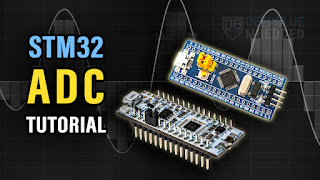How to configure swv itm data console in stm32cubeide?
Configuring the SWV ITM Data Console in STM32CubeIDE is a powerful technique for real-time debugging and printf-style logging with minimal performance impact. Here's a comprehensive guide.
Overview: What is SWV ITM?
SWV (Serial Wire Viewer) and ITM (Instrumentation Trace Macrocell) work together to provide a dedicated hardware-based profiling and debugging channel.
ITM: A hardware module in the ARM Cortex-M core that allows the application to send data packets.
SWV: The physical interface (uses the same SWD pins as debugging) to stream this data out.
Key Advantage: No UART required, very low CPU overhead, and doesn't halt program execution.
Step-by-Step Configuration
Step 1: Hardware Setup
Connect ST-LINK: Use a USB cable to connect your STM32 discovery/nucleo board
No extra wires needed: SWV uses the existing SWD (Serial Wire Debug) connection
Step 2: Project Configuration in STM32CubeIDE
A. Pinout & Configuration Tab
Enable Debug:
Go to "Pinout & Configuration" tab
Find "System Core" → SYS
Set Debug to Serial Wire
B. Clock Configuration
Configure System Clock:
Go to "Clock Configuration" tab
Ensure your system clock is properly configured
Important: Note your HCLK frequency (needed later)
C. Trace Configuration
Enable Trace:
Go back to "Pinout & Configuration"
Find "System Core" → SYS
Under "Debug", check Trace Asynchronous Sw
Set Core Clock to your HCLK frequency (e.g., 72,000,000 Hz)
D. Generate Code
Generate Project:
Click "Project" → "Generate Code" or use the gear icon
This applies all hardware configurations
Step 3: Code Implementation
Option A: Using printf() Redirection (Recommended)
Add this code to your main.c:
#include <stdio.h> // ITM Send Character function int __io_putchar(int ch) { ITM_SendChar(ch); return ch; } // Optional: For scanf functionality int __io_getchar(void) { return -1; // Not implemented for SWV }
Now you can use standard printf() statements:
printf("System started! HCLK = %lu Hz\r\n", SystemCoreClock); printf("Sensor value: %d\r\n", sensor_value);
Option B: Direct ITM Function Calls
// Send simple messages ITM_SendChar('A'); ITM_SendChar('\n'); // Send strings void SWV_Print(char *msg) { while (*msg) { ITM_SendChar(*msg++); } } // Usage SWV_Print("Hello from SWV!\r\n");
Step 4: STM32CubeIDE Debug Configuration
Create Debug Configuration:
Right-click your project → "Debug As" → "Debug Configurations"
Double-click "STM32 Cortex-M C/C++ Application"
Or edit existing configuration
Debugger Tab Settings:
Debug probe: Your ST-LINK
Interface: SWD
Mode: Connect under reset
Trace Tab Settings:
Check Enable Serial Wire Viewer (SWV)
Core Clock: Set to your HCLK frequency (e.g., 72,000,000)
SWV Clock: Usually same as core clock or divided by 2
ITM Stimulus Ports: Check Port 0 (this is for printf)
Apply and Debug
Step 5: Viewing SWV Data During Debugging
Start Debug Session:
Click "Debug" or use your debug configuration
Program will stop at main()
Open SWV Console:
Go to Window → Show View → Other...
Navigate to SWV → SWV ITM Data Console
Click "OK"
Configure SWV:
In the SWV view, click the "Configure SWV" button (wrench icon)
Ensure ITM Port 0 is checked
Click "OK"
Start Tracing:
Click the "Start Tracing" button (red record circle)
Resume your program (F8)
View Output:
All
printf()statements will appear in the SWV ITM Data Console
Complete Example Code
/* main.c */ #include "main.h" #include <stdio.h> // ITM function for printf redirection int __io_putchar(int ch) { ITM_SendChar(ch); return ch; } int main(void) { HAL_Init(); SystemClock_Config(); printf("\r\n=== SWV ITM Data Console Test ===\r\n"); printf("System Core Clock: %lu Hz\r\n", SystemCoreClock); uint32_t counter = 0; while (1) { printf("Counter: %lu\r\n", counter++); HAL_Delay(1000); } }
Troubleshooting Common Issues
1. No Output in SWV Console
Check: Core clock frequency in trace configuration
Check: ITM Port 0 is enabled in SWV configuration
Check: "Start Tracing" is clicked before resuming program
2. Garbage Characters
Cause: Incorrect core clock setting
Fix: Ensure HCLK frequency matches your system clock exactly
3. SWV Option Grayed Out
Cause: Debug session not active or SWV not enabled in debug config
Fix: Enable SWV in debug configuration → Trace tab
4. "ITM_SendChar" Undefined
Fix: Add this function if not defined:
#define ITM_Port8(n) (*((volatile unsigned char *)(0xE0000000+4*n))) #define ITM_Port16(n) (*((volatile unsigned short*)(0xE0000000+4*n))) #define ITM_Port32(n) (*((volatile unsigned long *)(0xE0000000+4*n))) #define DEMCR (*((volatile unsigned long *)(0xE000EDFC))) #define TRCENA 0x01000000 static inline uint32_t ITM_SendChar (uint32_t ch) { if ((DEMCR & TRCENA) && (ITM_Port32(0) != 0)) { while (ITM_Port32(0) == 0); ITM_Port8(0) = ch; } return(ch); }
Advanced Configuration
Multiple ITM Ports
You can use different ports for different data types:
// Send to different ports void SWV_SendToPort(uint8_t port, uint32_t data) { if (port < 32) { ITM_Port32(port) = data; } } // Usage: Port 0 for debug, Port 1 for sensor data, etc. SWV_SendToPort(1, sensor_value);
This setup provides a robust, high-performance debugging console that's perfect for real-time applications!




评论
发表评论